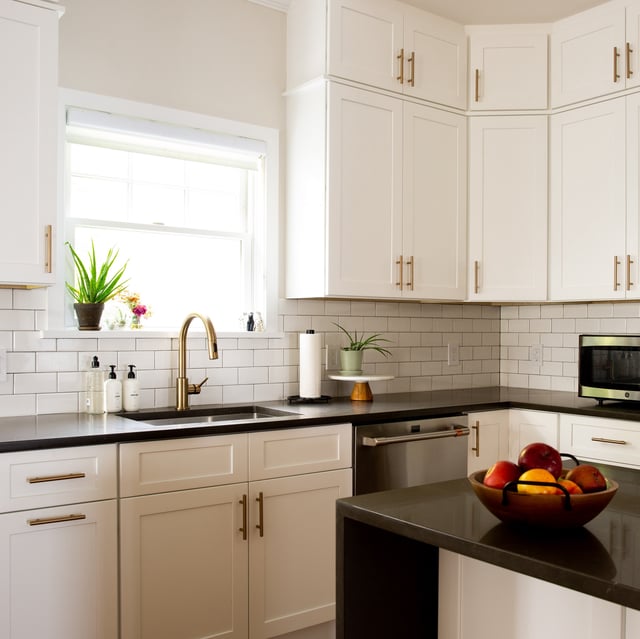
Kitchen
How Long Does a Kitchen Remodel Take?
04.01.2025
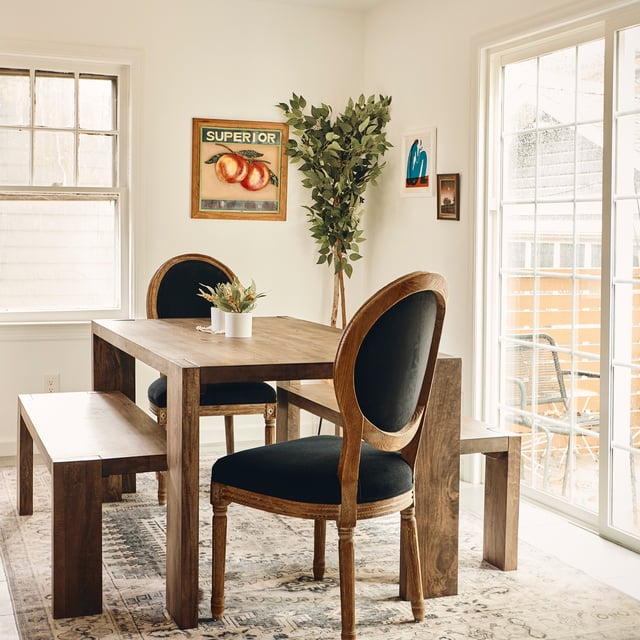
In This Article
So, you're thinking about adding a sunroom. Congratulations! You're officially entering the realm of people who sip coffee in natural light while pretending to read a book but actually just scrolling on their phones. A sunroom—sometimes called a solarium or four-season room—is a living space with large windows (sometimes even glass walls) that let you soak up the sunshine without dealing with pesky inconveniences like wind, bugs, or unpredictable weather.
Why add one? Well, for starters, it's like giving your house a front-row seat to nature. You get all the benefits of being outdoors—warmth, natural light, fresh air—without sacrificing the comfort of an actual roof over your head. Sunrooms also add value to your home, provide extra living space, and give you a year-round dose of vitamin D, which we could all use more of. Plus, if you've ever dreamt of being a person who has a designated "morning coffee spot," this is your chance.
Whether you want a cozy nook for reading, an extra entertaining space, or a makeshift jungle for all the houseplants you keep accidentally killing, a sunroom might just be the perfect addition to your home.
You've decided to add a sunroom, but now comes the real question—what kind? Do you want a three-season cozy retreat, or are you looking for a year-round paradise? Are you imagining a bright, airy escape or a full-blown glass palace? Let's break down your options—and, of course, what they'll cost you.
A three-season sunroom is perfect if you want to enjoy the warmth and sunlight of spring, summer, and fall—but don't necessarily need a winter retreat. These sunrooms typically lack insulation and an HVAC system, meaning they're great for mild temperatures but not ideal when the snow starts falling. Think of it as a fancy screened-in porch, just without the hassle of mosquitoes.
The cost of a three-season sunroom ranges from $10,000 to $40,000, depending on size, materials, and how high-end you want to go.
If you want to enjoy your sunroom year-round, this is the option for you. Unlike its three-season cousin, a four-season sunroom comes with insulation and is often connected to your home's HVAC system, making it comfortable no matter the temperature outside. Picture yourself sipping coffee while watching the snowfall—or basking in the summer sun without breaking a sweat.
All that extra comfort comes at a price, though. A four-season sunroom can cost anywhere from $25,000 to $80,000, but hey, you're essentially adding an extra room to your home that you can use all year long.
A glass solarium is for those who want the ultimate indoor-outdoor experience. With glass walls and a glass roof, this sunroom offers unobstructed views of your surroundings. It's perfect for stargazing, watching the rain, or just dramatically staring out at nature like you're in a movie. However, all that glass can make temperature control tricky—it can turn into an oven in the summer and an icebox in the winter unless you invest in proper insulation.
The cost for this stunning feature? Expect to pay between $30,000 and $75,000. It's not cheap, but you're basically turning your home into a modern greenhouse, so it's worth it.
If you've ever dreamed of sipping tea in a light-filled glass room surrounded by thriving plants, a conservatory is for you. Like a solarium, it has a glass roof and walls, but it's often designed specifically for growing plants. Whether you're an expert gardener or just trying to keep one plant alive, a conservatory brings a little nature indoors.
Conservatories come in a wide range of styles and prices, from $5,000 to $80,000, depending on how elaborate you go. A small one is relatively affordable, but if you're picturing something out of Bridgerton, be prepared to pay for it.
Unlike traditional sunrooms, an atrium is an open-roofed or glass-roofed space usually located in the center of a home. It's designed to flood your interior with natural light, creating a bright, airy atmosphere. Think of it as an indoor courtyard that makes your home feel like a luxury resort. Bonus: It's also a great place for plants!
The cost of an atrium ranges from $10,000 to $35,000, making it a relatively budget-friendly way to add more sunlight and style to your home.
So, which sunroom speaks to you? Whether you're after a simple three-season retreat or a full-on glass paradise, one thing's for sure—once you have one, you'll wonder how you ever lived without it.
You're picturing yourself basking in warm sunlight, book in hand, feeling smug about your excellent home improvement decision. But before you start dreaming about furniture arrangements, let's talk about what will determine how much this sunny oasis will set you back. Spoiler: It's more than just picking out a few windows.
In the world of sunrooms, bigger almost always means pricier. A cozy little nook for morning coffee? Relatively affordable. A sprawling glass paradise big enough to host yoga classes and an herb garden? That's going to cost you. The more square footage you add, the more materials, labor, and structural support you'll need—so think carefully about how much space you really need.
If you're working with a budget, consider scaling down just a bit. You can still have a stunning sunroom without turning it into a second living room for your entire extended family.
Learn More: How to Start Planning a Home Renovation
Here's where things can get really expensive—or surprisingly reasonable. The materials you choose for framing, windows, roofing, and flooring all play a big role in your final price tag. Want top-of-the-line insulated glass and hardwood floors? Get ready to shell out some serious cash. Opting for more budget-friendly vinyl windows and composite flooring? You'll save a chunk of change.
Glass is the biggest factor here—double-paned, insulated glass costs more but helps with temperature control. And if you go for a full-glass solarium? Well, let's just say that's a luxury purchase.
Where you live matters—a lot. Expect to pay more if you're in an area with high labor costs or strict building codes. Plus, local climate plays a role. A sunroom in sunny California won't need as much weatherproofing as one in Minnesota, where you'll want extra insulation to keep from turning into a human icicle in the winter.
If you're in a region with extreme temperatures, you may also need special materials to keep your sunroom comfortable year-round. That can mean extra costs for insulation, HVAC integration, or even tinted windows to reduce heat in the summer.
Unless you're a construction pro (or have a deep love for DIY disasters), you'll need skilled workers to bring your sunroom vision to life. Labor costs vary widely depending on where you live and how complicated your design is. A simple three-season sunroom? Fairly straightforward. A custom-designed, fully insulated, four-season masterpiece with a retractable roof? That's going to take more time—and a bigger paycheck for your contractor.
Ah, the part of home improvement no one likes to think about is paperwork. Most places require permits for adding a sunroom, and depending on local regulations, you might also need inspections throughout the process. Fees for permits vary by location, but they can add hundreds (or even thousands) to your total cost.
Moral of the story? Factor in these hidden costs, before you start building so your dream sunroom, doesn't turn into a financial surprise.
A sunroom is a beautiful investment in your home, adding light, space, and a seamless connection to the outdoors. But the key to making your vision a reality? Finding the right contractor. With the right team, the process can be smooth, stress-free, and even exciting. Here's how to ensure you hire a professional who will bring your dream sunroom to life.
Start with recommendations from people you trust. Friends, family, or neighbors who have recently completed a renovation can provide valuable insights. If you're not sure where to begin, online reviews on sites like Houzz, Angi, and Google can give you a good sense of a contractor's reputation. Look for consistent positive feedback, especially regarding reliability, craftsmanship, and communication. You can also use Block's contractor matching tool to match you with a contractor for free, saving you time and effort in your search.
Once you've gathered a shortlist, meet with at least three contractors to discuss your project. A good contractor will listen to your needs, offer suggestions, and be transparent about the process. This is also the time to ask questions: How long have they been building sunrooms? What challenges do they anticipate? How do they handle unexpected issues? By comparing multiple professionals, you'll get a sense of who aligns best with your vision and budget.
Licensing and insurance are non-negotiable. A qualified contractor should be properly licensed in your area and carry both liability and worker's compensation insurance. This protects both you and them during construction. Additionally, experience matters—ensure they have a strong track record of building sunrooms, not just general home improvements.
Professional affiliations, such as the National Association of the Remodeling Industry membership, can also indicate a commitment to high standards. While not required, these credentials add an extra layer of confidence.
The best way to gauge a contractor's quality is by looking at their previous work. Ask to see a portfolio of completed sunrooms, or better yet, request references from past clients. If possible, visit a finished project in person to get a feel for the craftsmanship.
Pay attention to details like window installation, flooring finishes, and how seamlessly the sunroom integrates with the rest of the home. Every sunroom is unique, so make sure their past work reflects the style and functionality you're looking for.
Before making a final decision, request a comprehensive quote that outlines all costs, including materials, labor, permits, and an estimated timeline. A clear, itemized breakdown helps you avoid surprises down the road and ensures you're making an informed choice.
A well-designed sunroom should enhance your home for years to come, and working with the right contractor makes all the difference. By doing your research, asking the right questions, and reviewing past work, you can feel confident that your project is in expert hands.
You've picked your sunroom style, found the perfect contractor, and are mentally arranging your future furniture. But before you dive in, there are a few more things to consider. From installation choices to long-term maintenance, these details can make all the difference in ensuring your sunroom is as functional as it is beautiful.
If you love a good weekend project, you might be tempted to tackle a sunroom yourself. There are DIY sunroom kits available, and they can save you money—if you have the skills, time, and patience. But let's be honest: assembling a sunroom is a bit more complicated than putting together an IKEA bookshelf. Mistakes can be costly, and an improperly installed sunroom can lead to leaks, poor insulation, or even structural issues.
Professional installation, on the other hand, guarantees quality craftsmanship and compliance with local building codes. It might cost more upfront, but it also means you'll end up with a sunroom that lasts—without spending months wrestling with framing and windows in your backyard.
A sunroom isn't just a beautiful addition to your home—it's also a smart one. A well-designed sunroom can increase your home's value and boost curb appeal, making it more attractive to potential buyers down the line.
While the exact ROI depends on factors like location, materials, and the quality of the build, many homeowners recoup a good portion of their investment when they sell. Plus, in the meantime, you get to enjoy a bright, relaxing space—arguably a return on investment in your own happiness.
Like any home addition, a sunroom requires some upkeep. The type of materials you choose will determine how much maintenance is needed. Vinyl or aluminum frames? Low maintenance. Wood? Gorgeous but requires regular sealing or painting to prevent weather damage.
Glass is another factor—large windows bring in light but also show every speck of dirt. If you don't love cleaning, consider self-cleaning or tinted glass options that help reduce streaks and heat buildup. And if you live somewhere with extreme weather, make sure your sunroom materials can handle it—no one wants a leaking roof or warping floors after the first big storm.
Let's talk about the money part. Sunrooms can be a big investment, but financing options are available if you don't want to pay the full cost upfront. Home improvement loans, personal loans, and home equity lines of credit (HELOCs) are all worth exploring. Some contractors even offer financing plans to spread out payments.
Before deciding, compare interest rates and terms to find the best option for your budget. The goal is to enjoy your sunroom without stressing over the cost.
With these additional considerations in mind, you're well on your way to creating a sunroom that's not only beautiful but also a smart, long-term investment.
A sunroom isn't just an addition—it's a lifestyle upgrade. It's where you'll sip coffee in the morning, bask in the afternoon sun, and maybe even pretend to be productive while just watching the rain. By understanding the costs, picking the right style, and hiring a contractor who shows up, you'll be well on your way to enjoying your little slice of sunshine.
Not sure which sunroom is right for you? Take our quiz to find out which one matches your home and budget, and patience for maintenance!
What factors affect the cost of a sunroom addition the most?
How long does it typically take to build a sunroom?
What is the difference between a three-season and a four-season sunroom?
Do I need a permit to build a sunroom addition on my property?
How can I ensure I hire a reliable contractor for my sunroom project?
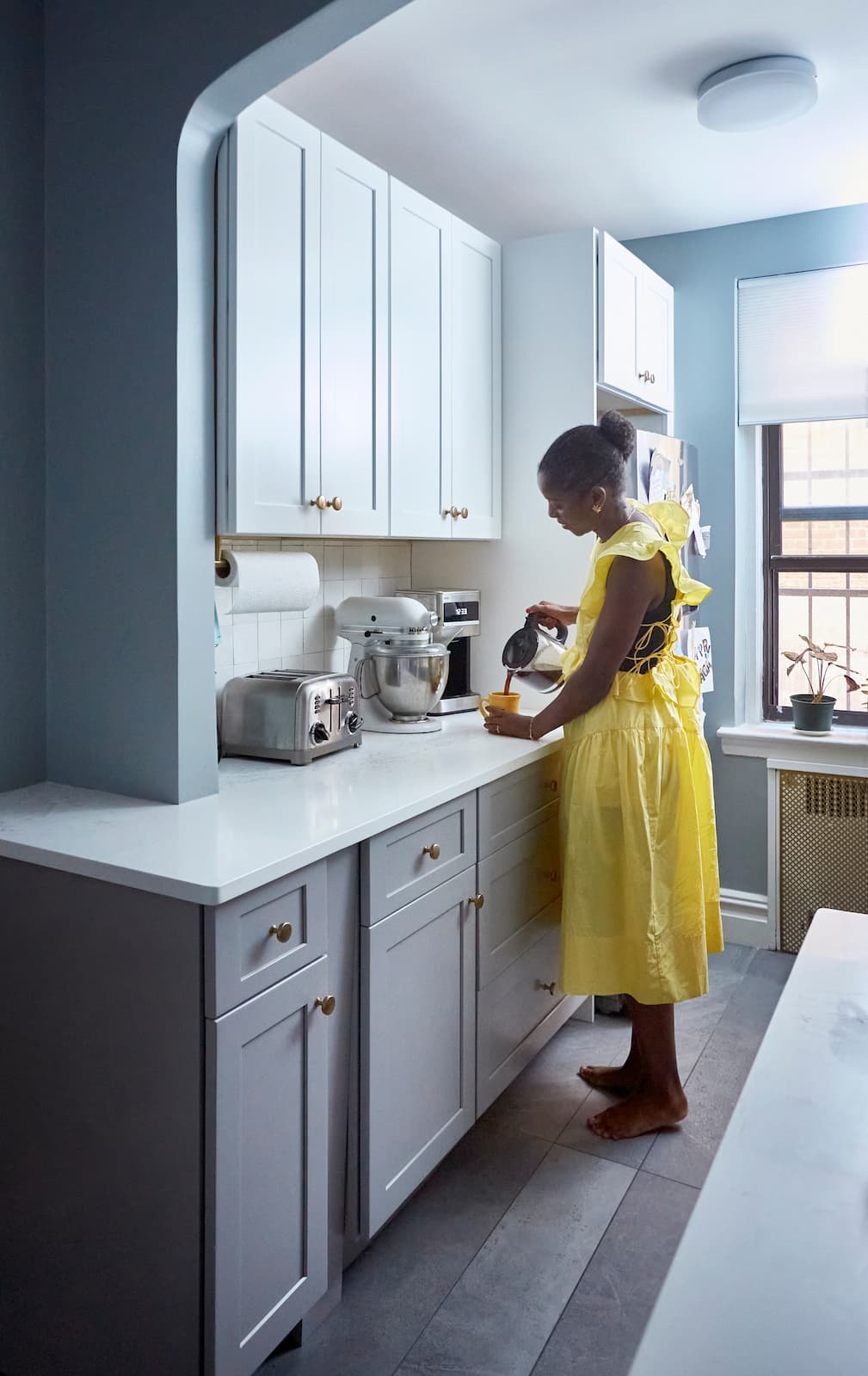
Renovate confidently with Block
Easily compare quotes from top quality contractors, and get peace of mind with warranty & price protections.
Thousands of homeowners have renovated with Block

4.5 Stars (100+)

4.7 Stars (100+)

4.5 Stars (75+)

Kitchen
How Long Does a Kitchen Remodel Take?
04.01.2025
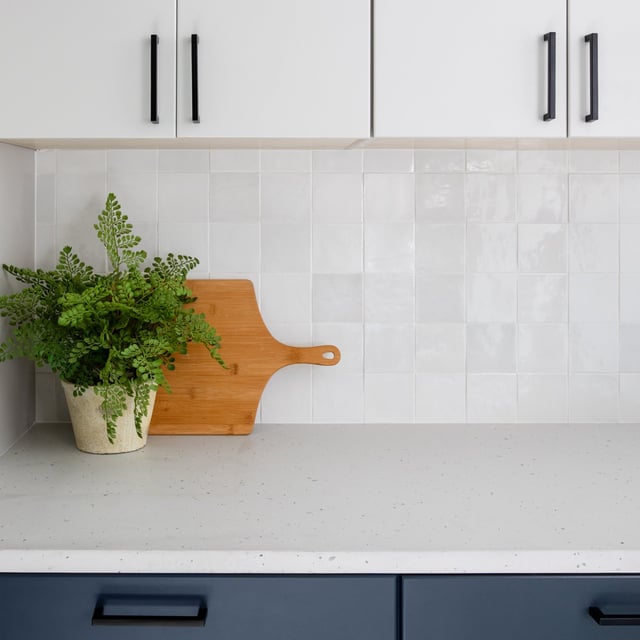
Design
The Ultimate Guide to Kitchen Tiles with Tile Options
04.01.2025

Design
What is a Frameless Glass Shower Screen?
03.25.2025
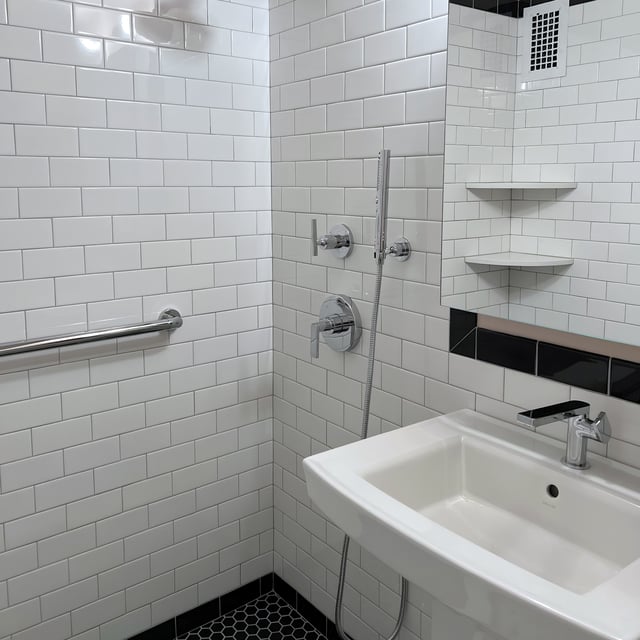
Design
How to Convert a Bathroom for ADA & Handicap Accessibility
03.13.2025
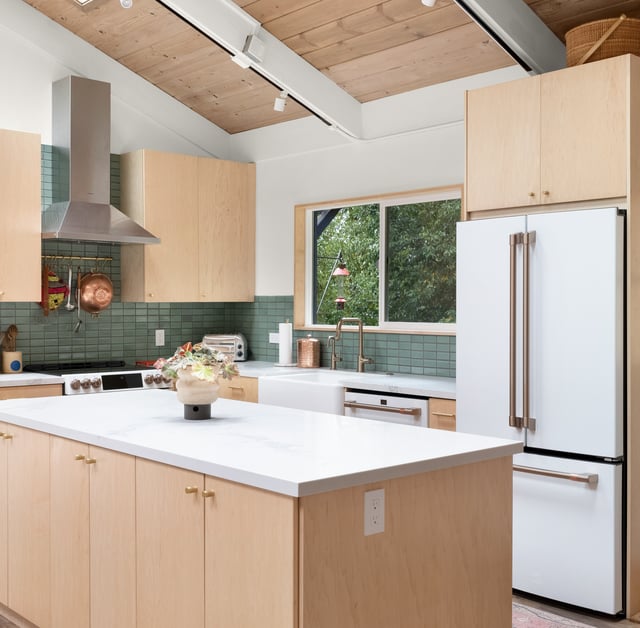
Cost
How Much Does a Home Renovation Cost in the Bay Area?
03.13.2025
Renovate confidently